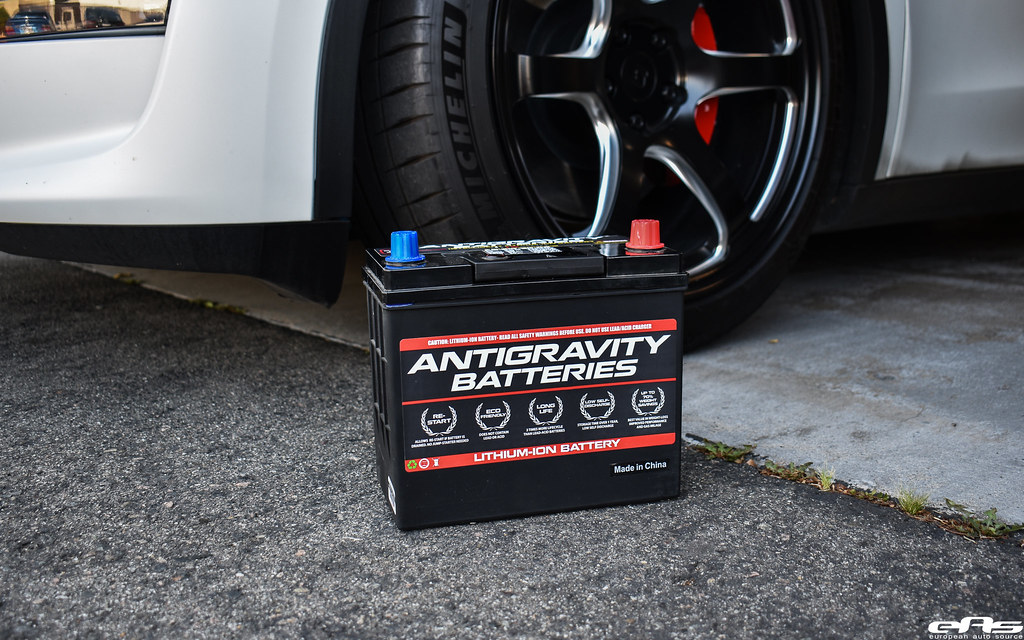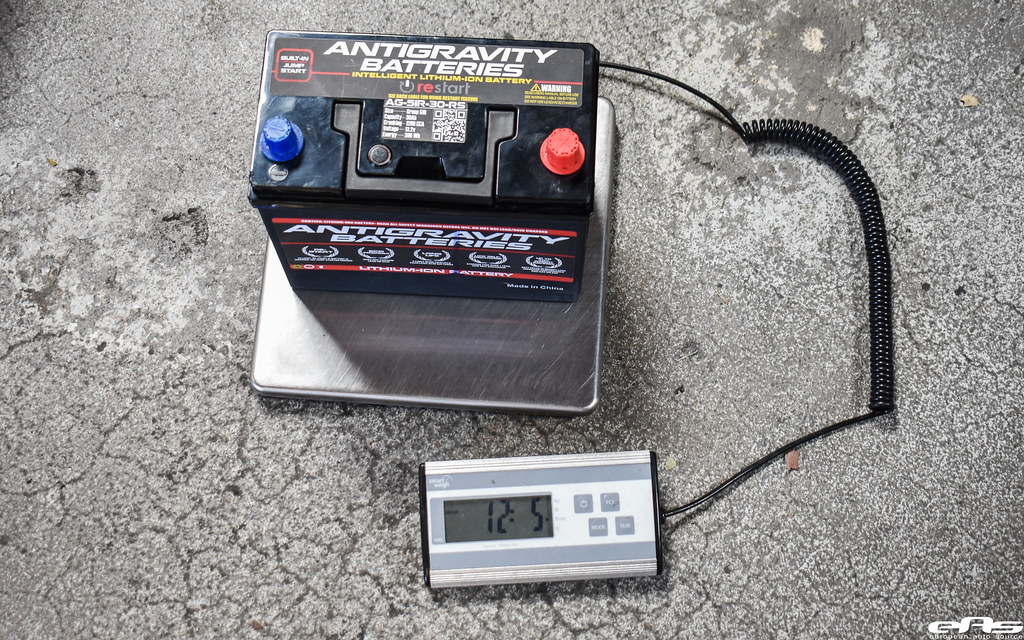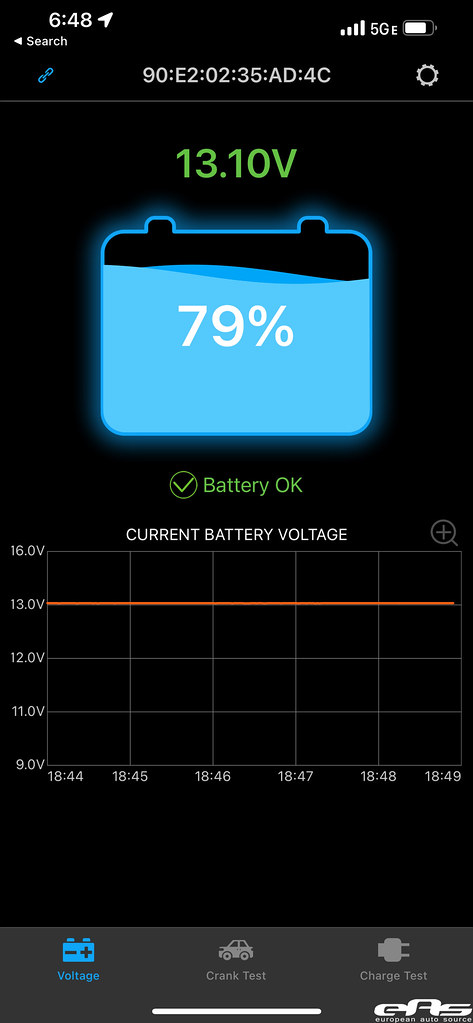Welcome to Tesla Motors Club
Discuss Tesla's Model S, Model 3, Model X, Model Y, Cybertruck, Roadster and More.
Register
Install the app
How to install the app on iOS
You can install our site as a web app on your iOS device by utilizing the Add to Home Screen feature in Safari. Please see this thread for more details on this.
Note: This feature may not be available in some browsers.
-
Want to remove ads? Register an account and login to see fewer ads, and become a Supporting Member to remove almost all ads.
You are using an out of date browser. It may not display this or other websites correctly.
You should upgrade or use an alternative browser.
You should upgrade or use an alternative browser.
Vendor Antigravity Group 51R LiFePO4 Lithium battery for Tesla Model 3/Model Y
- Thread starter tom @ eas
- Start date
I've been using the 30AH, there's a shot of it in the photo comparison in Post #1. I've been monitoring weekly with the AG battery monitor just to make sure things are running smoothly and so far its been smooth sailing since day one. Links to both below.On the Antigravity website it shows 24AH as racing only. 30AH is my guess for recommended.

Antigravity - Group-51R RE-START Lightweight Lithium Battery
RE-START Series: FIRST Batteries with Built-In Jump-Starting! Never stranded again… Antigravity Batteries introduces the groundbreaking “RE-START (RS)” line of batteries – the first batteries with built-in jump starting! The revolutionary ATX-30 RE-START Battery intelligently monitors its...
europeanautosource.com
Antigravity - Lithium Battery Tracker
The Antigravity Battery Tracker monitors your vehicle battery status through your phone or tablet by using our free Battery Tracker App (iOS or Android, Bluetooth 4.0). The app has three main pages: Voltage Test, Cranking Test and Charging Test. The simple interface makes it easy to monitor the...
europeanautosource.com
Sometimes peace of mind along is worth the added cost of never having to deal in this area again. The stock lead acid batteries are really cheap quality and failing a bit prematurely as already seen on Model 3s. Expect a little weight savings, much better longevity and added safety with added RE-Start (built in jump-start) partition so you are never stranded.Considering you can buy a new, OEM battery for like 80 from Tesla I can't think of a reason why anybody would buy the Antigravity. You can go through a lot of batteries before you break even.
I've been using the 30AH, there's a shot of it in the photo comparison in Post #1. I've been monitoring weekly with the AG battery monitor just to make sure things are running smoothly and so far its been smooth sailing since day one. Links to both below.
Traditionally in an ICE car you'd opt for a higher AH battery so it does't drain over time. I wonder if this is even a concern since Tesla will charge the battery when necessary.
Sometimes peace of mind along is worth the added cost of never having to deal in this area again. The stock lead acid batteries are really cheap quality and failing a bit prematurely as already seen on Model 3s.
Sorry, I have to disagree with that statement. We don't have any long term evidence that the Antigravity is any better in the long run. You're the only data point, and that's 12 months (which I appreciate you sharing!). Anecdotally, I replaced the original OEM battery on our 2018 a few months ago in LA weather. That's feels pretty normal run for a battery.
Expect a little weight savings
~15 lbs of static weight is a nice secondary benefit as it's always nice not to haul around extra weight. But I know I have more than 15lbs of stuff in my trunk
much better longevity and added safety with added RE-Start (built in jump-start) partition so you are never stranded.
Still no data on longevity other than your feedback. How does the restart system work with an EV?
It's on the 12V system, haven't had any issues with the battery to use it yet.Still no data on longevity other than your feedback. How does the restart system work with an EV?
It's on the 12V system, haven't had any issues with the battery to use it yet.
Tesla will keep the 12v battery charged unless of course it can't. How big is antigravity reserve? If Tesla can't keep the battery charged and the reserve is utilized, wouldn't the car simply die some distance from when the reserve was originally used?
Big enough to jump start the lead acid battery its replacing on an ICE configuration. the 51R type is used on many applications. Reserve is intended as a backup solution, you will still need to find out the reason your battery was not charging in the first place (whether vehicle or battery issue).Tesla will keep the 12v battery charged unless of course it can't. How big is antigravity reserve? If Tesla can't keep the battery charged and the reserve is utilized, wouldn't the car simply die some distance from when the reserve was originally used?
Low voltage usually will result in weird CAN errors on the notification screen.
mnx
2018 M3P
I installed the 30Ah version today. No more 12V errors.  I wrapped mine in a thin blanket of insulation foam, to help keep it warm in cold weather since I heard that Tesla’s were complaining in cold weather with the lithium battery Mountain Pass Performance sells.
I wrapped mine in a thin blanket of insulation foam, to help keep it warm in cold weather since I heard that Tesla’s were complaining in cold weather with the lithium battery Mountain Pass Performance sells.
It’s 17.6lbs lighter than the OE lead acid fwiw.
I’ll report back in the spring and let you know how it survives Canadian winter.
It’s 17.6lbs lighter than the OE lead acid fwiw.
I’ll report back in the spring and let you know how it survives Canadian winter.
labmixz
Member
Did you have the 24Ah version previously? Saying you installed the 30Ah version and no longer getting 12V errors, makes me wonder if you tried a 24Ah version and were getting errors or different lead battery. Just curious.I installed the 30Ah version today. No more 12V errors.I wrapped mine in a thin blanket of insulation foam, to help keep it warm in cold weather since I heard that Tesla’s were complaining in cold weather with the lithium battery Mountain Pass Performance sells.
It’s 17.6lbs lighter than the OE lead acid fwiw.
I’ll report back in the spring and let you know how it survives Canadian winter.
mnx
2018 M3P
Did you have the 24Ah version previously? Saying you installed the 30Ah version and no longer getting 12V errors, makes me wonder if you tried a 24Ah version and were getting errors or different lead battery. Just curious.
Sorry for the confusion. My original lead acid (49 months old) thew some errors this morning and required replacement. I replaced it with the 30Ah Antigravity.
mnx
2018 M3P
Not that it makes that much of a difference but a 2018 M3P is 4086lbs...Weight savings on a car that's almost 5000lbs ...lol
Midnightsun
Active Member
I am not convinced there is the perfect setup for lithium on older lead acid based Teslas. The older non lithium Teslas are set up to monitor and charge the requirements of a standard lead acid battery. Not sure how well the BMS can trick the Tesla into keeping the charge going or not and at what rate when lithium has such different parameters such as rate of charge and higher voltage input when the Tesla is looking for parameters typical of all Lead Acid batteries to regulate input/output. Bottom line is the Tesla is a lead acid charger trying to charge a Lithium battery with a BMS trying to trick it to do so. How does the BMS handle the 14+ volt charging requirements of lithium? Is there a built in booster like in a DC to DC charger?
Lithium is amazing, have 1000AH of LifePo4 for a house bank in the boat however everything is set up to charge and monitor LifePo4 in my case.
As for our 2020 model Y which is 3 years old now, no issues with the 12v battery yet. I have always changed out my 12v batteries on every car I have owned after 4 years as preventative maintenance. Group 51R batteries are rather common and can even be had at Walmart for that matter.
Lithium is amazing, have 1000AH of LifePo4 for a house bank in the boat however everything is set up to charge and monitor LifePo4 in my case.
As for our 2020 model Y which is 3 years old now, no issues with the 12v battery yet. I have always changed out my 12v batteries on every car I have owned after 4 years as preventative maintenance. Group 51R batteries are rather common and can even be had at Walmart for that matter.
Flybyglass
Member
I have an Ohmmu version 4+. Not the heated model which will help winter colder weather charging. While it used to get rejected rather quickly over the past 1.5 years (prior they worked great for a year until Tesla changed charging) it has not been rejected nor generated any messages wether in notifications or in service mode. Users with Antigravity also now are reporting similar results. I have used the traditional lead acid, AGM and now the Ohmmu lithium. Normally the car wakes, charges to about 14.3 volts, balances then may apply a discharge to bring the battery to about 13.5 and stop. When I say apply it is actually reducing PCS supply and load sharing with the battery for a period. about once a week, I see what I call a battery integrity check occurring. The Tesla will charge to 100%/14.3-14.5 volts. Then apply a discharge starting at 25 amps(parked or driving) gradually reducing to 1 amp as voltage drops to 13.04. After a couple hours the voltage drops to about 12.9/19-20% and stops. After a short period the battery starts to charge back to 100% and back to normal for another week. Whether this is thanks to Ohmmu software (which now the user can update via Bluetooth) or changes to Tesla software not sure. I've been running for 3 weeks others for a year or more.I am not convinced there is the perfect setup for lithium on older lead acid based Teslas. The older non lithium Teslas are set up to monitor and charge the requirements of a standard lead acid battery. Not sure how well the BMS can trick the Tesla into keeping the charge going or not and at what rate when lithium has such different parameters such as rate of charge and higher voltage input when the Tesla is looking for parameters typical of all Lead Acid batteries to regulate input/output. Bottom line is the Tesla is a lead acid charger trying to charge a Lithium battery with a BMS trying to trick it to do so. How does the BMS handle the 14+ volt charging requirements of lithium? Is there a built in booster like in a DC to DC charger?
Lithium is amazing, have 1000AH of LifePo4 for a house bank in the boat however everything is set up to charge and monitor LifePo4 in my case.
As for our 2020 model Y which is 3 years old now, no issues with the 12v battery yet. I have always changed out my 12v batteries on every car I have owned after 4 years as preventative maintenance. Group 51R batteries are rather common and can even be had at Walmart for that matter.
Last edited:
scottf200
Well-Known Member
Flybyglass
Member
This is awesome. Now I just need that updateNot sure if this impacts this thread:

geordi
Mr Fusion V.1
Still no change for the S or X, that battery type setting appears to only be for the 3/Y with the lead battery. So if anyone was hoping this might make that overpriced battery non-error-generating... No such luck.
rotarypower101
Member
What does "You can update the configuration to a different type" mean?Not sure if this impacts this thread:

Does it give the user choices in type of lead acid cell or possibly Lithium chemistries also?
Strange they will dedicated resources to prohibiting what are now becoming common Lithium based 12V LV cells for many different applications, but not create a profile to support them.
napsfolyfe
Member
love antigravity batteries. use them on all my motorcycles. . have yet to replace the one in my Y though.Few images of the Antigravity battery vs the OEM Hankook






I'm on 2023.32.4 and I don't see anything for a low voltage menu heading anywhere in the operating system. Even searching for low voltage does not yield anything.Not sure if this impacts this thread:

Flybyglass
Member
For clarity did you check service mode? It's mentioned in the service manual about selecting battery type. If needed I can list the steps to access.I'm on 2023.32.4 and I don't see anything for a low voltage menu heading anywhere in the operating system. Even searching for low voltage does not yield anything.
Similar threads
- Replies
- 11
- Views
- 2K
- Replies
- 1
- Views
- 223


